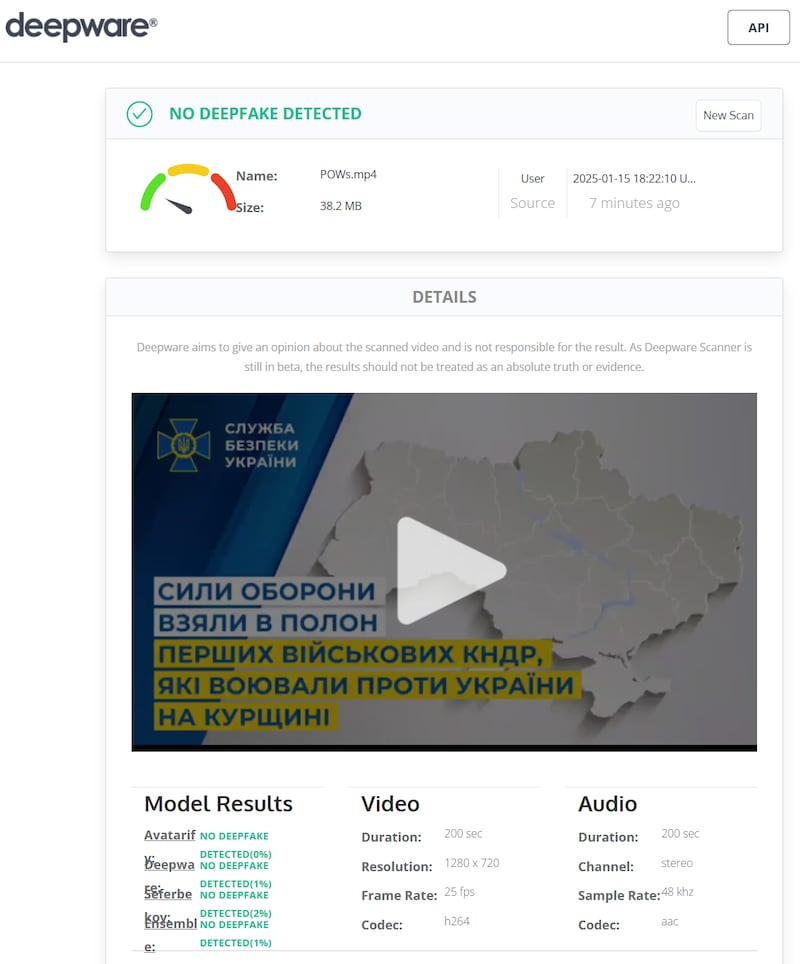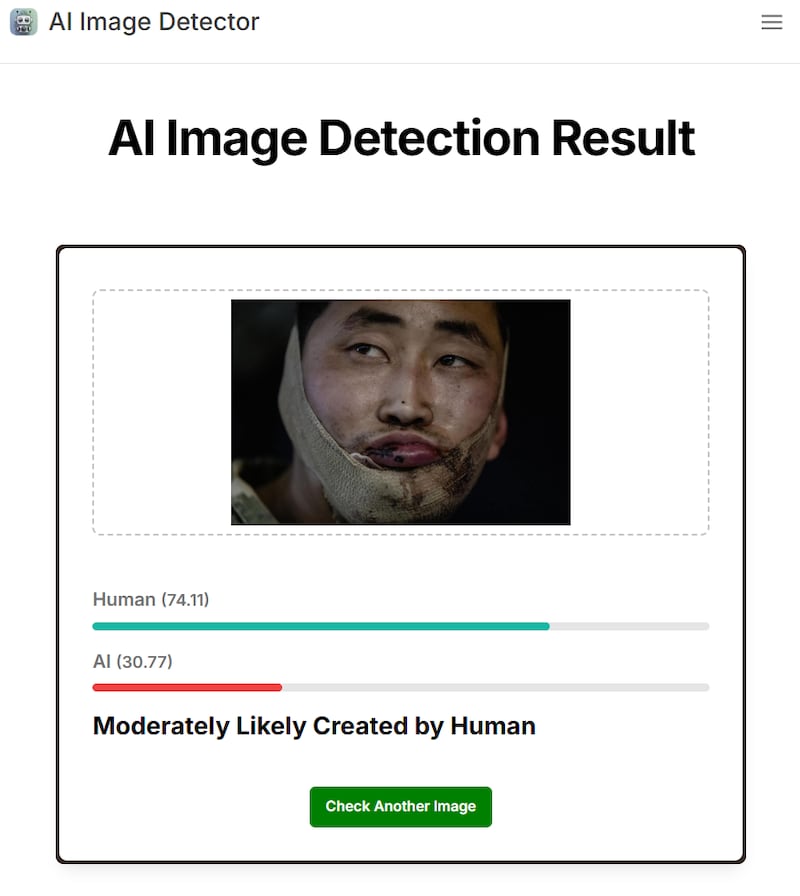After Ukraine released a video of what it said showed a North Korean soldier captured in Russia’s Kursk region, some social media users questioned it, saying the video had been digitally manipulated.
But experts contacted by Asia Fact Check Lab who examined the video say it appears to be authentic. The intricate details in the video show it was neither AI-generated nor tampered with, they said.
Also, several AI content detection tools indicated that it was unlikely the video had been digitally modified. Ukrainian authorities also rejected the claim.
On Jan. 11, the Security Service of Ukraine, or SSU, released a video of what it said showed two North Korean soldiers captured in Kursk.
As many as 12,000 North Korean soldiers are in Russia to support its war against Ukraine in Kursk, according to Ukraine and the United States – although neither Moscow nor Pyongyang has acknowledged this. So far, Ukraine reported 3,800 casualties among North Korean soldiers.
But some social media users said the video appeared to be manipulated, including this post on X on Jan. 14, 2025, that showed a photo of a man drinking from a cup through a straw.
“The picture of the ‘captured DPRK’ is an AI Fake just look there are 6 fingers and not 5,” reads the claim, referring to North Korea by its official name, the Democratic People’s Republic of Korea.
The X user highlighted what appears to be his fingers with a red circle, claiming that six fingers were visible and citing that as evidence of AI manipulation.

The presence of six fingers would indicate AI manipulation since Artificial Intelligence often struggles to accurately render hands.
Original video
But the accusations appear to be unfounded.

A reverse image search found the photo was taken from a video published by the SSU, on Jan. 11. The man seen in the image posted by X post can be seen at the video’s 35-second mark.
In the video, the man’s left hand can be seen blackened and dirty, and it appears that the white area at the point where the palm and wrist meet seems to have created an optical illusion that a sixth finger exists.
A closer look at other parts of the video, including at the clip’s two-minute and 32-second mark, shows that the man has five fingers on his left hand.

Taiwanese information security expert Paul Liu said the intricate details captured in the video confirmed it was neither AI-generated nor tampered with.
For example, at the video’s 2:36 mark, someone hands a pen to another person. “This is something the AI generation typically struggles with because it involves three overlapping objects: hand A, the pen, and hand B,” Liu said. “Currently, AI doesn’t handle overlaps involving more than two objects very well.”

Liu also pointed to scenes where the video showed details of an identity card.
“AI currently cannot produce something as clear as what’s shown on the passport unless the entire video was post-processed, blending real and fake elements together.”

“Comparing the footage from different timestamps, the indentations on the man’s face and the location of the injuries on his hand are consistent,” Liu added.
Yu Chia-Mu, associate professor at Taiwan’s National Yang Ming Chiao Tung University and an AI safety expert, said the man’s little finger did look slightly suspicious at the video’s 35-second mark, but he did not clearly see six fingers.
AI detection tools
The use of tools used to detect AI-generated content found that the video was unlikely to have been manipulated.
Deepware, a tool designed to detect deepfakes and manipulated digital media using advanced AI algorithms, found no deepfake from the video.
A deepfake is a synthetic media creation, often a video or audio, generated using artificial intelligence to imitate a person’s likeness or voice, often with high realism.

A check of the high-definition photos of the man released by Ukraine President Zelenskyy with Sightengine, a tool that analyzes images for potential manipulation, showed the likelihood of manipulation at just 1%, while Hive Moderation, another image analysis tool, assessed it even lower at 0.3%.
Both tools concluded that the photo was original and unaltered.
Meanwhile, the Image Detector, which estimates whether an image was created by a human or generated by AI, found a 74.11% likelihood that the photo was human-taken and a 30.77% likelihood of AI generation, ultimately concluding that the photo was “moderately likely to have been created by a human.”

The Center for Countering Disinformation, a working body of the National Security and Defense Council of Ukraine, dismissed the claim on Jan. 13.
“Propaganda sources circulate claims that either identify the prisoners as Russians from the Republic of Tuva, argue that they are South Koreans rather than North Koreans, or dismiss the video of their interrogation as staged,” the center said on its official X channel.
As of Jan. 15, the center had not responded to Radio Free Asia’s inquiries.
Edited by Taejun Kang and Malcolm Foster.
